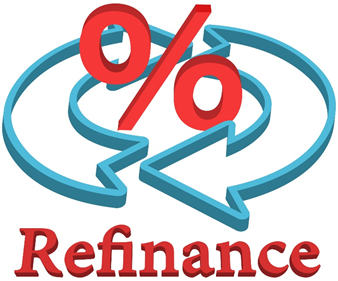Definition
Related Definitions
Bullet Repayment
What is Bullet Repayment?
Firms can pay off certain loans by making significant repayment at the end of the tenure. This form of repayment is referred to as bullet repayment. Loans offering such a repayment option are called bullet loans. The principal is paid in one lump sum at the end of the tenure in a loan with bullet repayment. Although interest is often collected as part of the bullet payment, most loans are interest-only for the duration of the contract, with only the remaining principal due at the end. A bullet repayment loan offers the benefit of not paying back the loan right away- this will be beneficial to those who are experiencing short-term cash flow problems. However, the entity must be prepared to receive a lump sum payment at the end of the loan term. Some borrowers may not get a long-term loan with a monthly payment schedule, but they too are enabled with the bullet repayment option.
Summary
- Repaying a loan by making big principal repayment at the end of the tenure is referred to as a bullet repayment, and such loans are called bullet loans.
- The cash outflows associated with repaying a bullet loan depend on whether it is an interest-only loan or loan with amortisation and bullet repayment.
- If the debtor lacks funds when the balloon payment is due, the lender would seize any collateral to secure the loan.
Frequently Asked Questions
What are bullet loans?
A bullet loan is a form of short-term lending that requires only one lump sum payment at the end of the loan's term. It is also known as a "balloon loan." Bullet bonds too have a similar functioning. The word bullet here refers to the large principal lump sum payment that is due at the maturity of the debt instrument.
What are the strategies for bullet repayments?
The key benefit of a bullet loan is the lower monthly payments. However, the is no rule of thumb that lower payments are better for long-term growth than a loan with more consistent payments. Companies must devise growth strategies to cover both the total increased cost of finance and the opportunity cost at the end of a loan by making smaller payments at the outset. Instead of reinvesting this money in growth, one must start saving towards the end of the loan to make the bullet payment. Many borrowers have experienced problems with this form of loan after taking one out. Many borrowers do not make the necessary arrangements to make the balloon payment at the end of the loan period, which is one of the most serious issues. The balloon payment is due, but the creditor lacks the funds to make it- in that scenario, the lender would seize any collateral used to secure the loan. Thus it is of essence to arrange for the bulk payment well in advance. Bullet loans are often commonly refinanced. Borrowers also use the loan to obtain easy access to funds. They then take advantage of the bullet loan's low-interest monthly payments. They will refinance into a new loan when the balloon payment is due.

ID 6427425© Stuartkey I Megapixl.com
Is refinancing a bullet loan always beneficial?
People use a bullet loan to purchase a home and avoid large monthly instalments. Similar may be the case of firms while purchasing large assets. It is profitable only if the property's value increases. They can either sell the property that is worth more at maturity or refinance it. On the other hand, if property prices fall, borrowers will bear the brunt of it. During financial headwinds in the economy, due to lower rates, the borrowers would be unable to sell the property during this period when they could have used the profit to pay off the bullet loan.

ID 33682004 © Michaeldb | Megapixl.com
How can bullet repayments impact cash flows?
Depending on the customer's repayment attitude or payment terms, the loan structure may be configured in various ways. The borrower can repay the loan in one lump sum or over time with interest payments. Normal payment modes include weekly, annually, or quarterly instalments, which reduce the lump sum money at maturity.
A lump-sum bullet loan requires interest accrual based on the loan's term, such as monthly, annually, or otherwise. It allows the borrower to pay off the whole loan at the end of the period. The cash flows depend on the way the debt is repaid. The two main forms are-
- Interest-only Loans
Usually, the instalments on debts have an element of principal and interest as well. Initially, the interest components are more, but towards the end, the principal dominates. The interest-only loans have only interest payment throughout the tenure, and the entire principal is repaid at the repayment date. Suppose a loan is taken for US$500000 at a 20% interest rate per annum for ten years. Then using compound interest, we arrive at the monthly instalment value of US$9663. However, if the bullet repayment option is exercised by paying only the interest for ten years, the monthly outflow of cash will be US$8333. The debtor can save US$1330 month on month in cash outflows. Contrasting to this, by the end of the tenure, in the regular installment case, the outflow would be a total of US$1159534 and US$1500000 in the case of bullet repayment- this implies an excess of US$340465 if interest only bullet loan is repaid. Thus, the option of bullet repayment will be chosen only if the returns generated by saving USD1330 can overshoot the cost of such a debt.

ID 209367046 © Jennmiranda3855 | Megapixl.com
- Loans including amortisation and a bullet payment
Suppose for a loan of US$500,000 bullet repayment is US$325,000 and the amortised amount is US$175,000. For the amortised amount, the monthly outflow of cash will be US$3,382, while for the interest-only portion, it will be USD5417, totalling a monthly cash outflow of USD8,800. Over ten years, the total outflow will be USD1,380,000
